G, GJ, J Tube Complications Clinical Pathway — Inpatient
Granulation Tissue
Granulation tissue is beefy, pink or red connective tissue that forms around the healing enteral tube site. It is ‘proud flesh’ that can form inappropriately as a result of trauma to the stoma site (e.g., pulling or snagging of the tube, irritation) and:
- Thrives in a moist environment
- Tends to have a high bioburden (lots of microbes and germs), which causes continued overgrowth
The goals of treating granulation tissue include:
- Minimize trauma to site — because tissue is very vascular, it can bleed easily. Re-traumatizing may cause new hypergranulation tissue to form.
- Treat the growth and shrink the tissue — manage moisture, reduce bioburden, and stabilize the tube to prevent trauma. This healing process can take several weeks.
- Prevent worsening and progression of the underlying cause — e.g., moisture from irritant dermatitis, leaking, wound, tension on the tubing.
Granulation Tissue
| Recommended Approach | Comments | |
|---|---|---|
1st line intervention (initiated by Bedside RN or FLOC) |
|
|
|
|
|
2nd line interventions if above steps fail (initiated by FLOC with/out managing service) |
OR |
|
|
|
Mild - Moderate Granulation Tissue
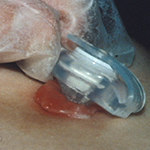
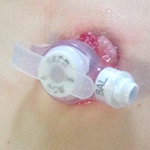
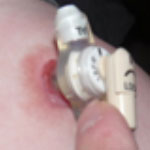
Severe Granulation Tissue
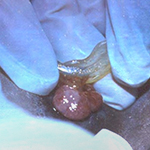
Differentiating Prolapse from Granulation Tissue
Prolapse can be difficult to identify and differentiate from hypergranulation tissue. Prolapsed gastric mucosa tends to have a beefy red color and velvety, smooth appearance. Granulation tissue tends to be pink or red in color, feels spongy or firm, and looks bumpy. If unsure about prolapse, notify the appropriate service. Silver nitrate is contraindicated for prolapse.
Granulation Tissue
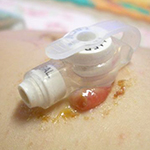
Prolapse
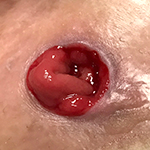
Following Bedside Treatments
If the granulation tissue is not improving after a regimen of triamcinolone, consider silver nitrate. To apply, notify the appropriate service. Only a trained provider may place silver nitrate.
If all interventions fail, consult General Surgery for potential stoma revision.